Engineering Designers require specialized tools, applications, and software to develop and analyze a new product. Design engineers use Computer-aided Design (CAD) software to develop, test, and improve the mechanism of the product.
They have to create a design from sketching to the analysis of each part by satisfying all the constraints.
Such software helps to make a clear picture of a product with complete analysis and design structure to reduce the flaws in the product design before going to the manufacturing phase.
Catia Tutorial for Beginners
| Table of Content - What is Catia? |
Types of Designing Software
There are several numbers of designing software available in the market such as CATIA, AutoCAD, Solidworks, Fusion 360, MatLab, Ansys, Creo, etc. CATIA software is the most widely used 3D design tool developed by Dassault Systemes.
This article helps you to understand “What is CATIA?”. But before that, let’s learn the basic types of designing software.
| If you want to enrich your career and become a professional in CATIA, then visit Mindmajix - a global online training platform: "CATIA Online Certification" This course will help you to achieve excellence in this domain. |
CAD (Computer-Aided Design)
Computer-aided design (CAD) is software that is used to design and analyze the created models defined by geometrical parameters. These models usually appear on the computer screen as 2D drawings and 3D models.
CAD software is used to increase productivity, quality of design, and to create the database for design manufacturing. It is also capable of enhancing communication, creating a single source of truth for engineers and manufacturers.
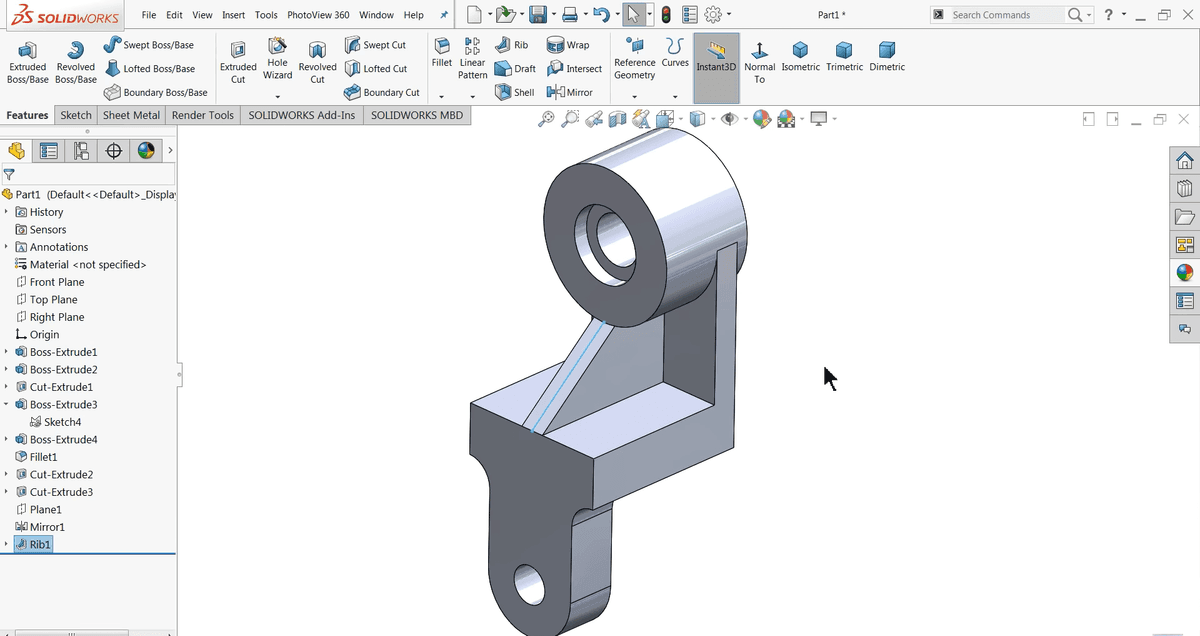
CAM (Computer-Aided Manufacturing)
Computer-Aided Manufacturing (CAM) is the use of software and Computer Numerical Control (CNC) machines to automate the manufacturing process.
CAM includes three main components as Software- which helps to generate a toolpath to make a final product, Machinery- which makes the raw material into a finished product, and post-processing- which converts a toolpath into a CNC language that the CNC machine can run.
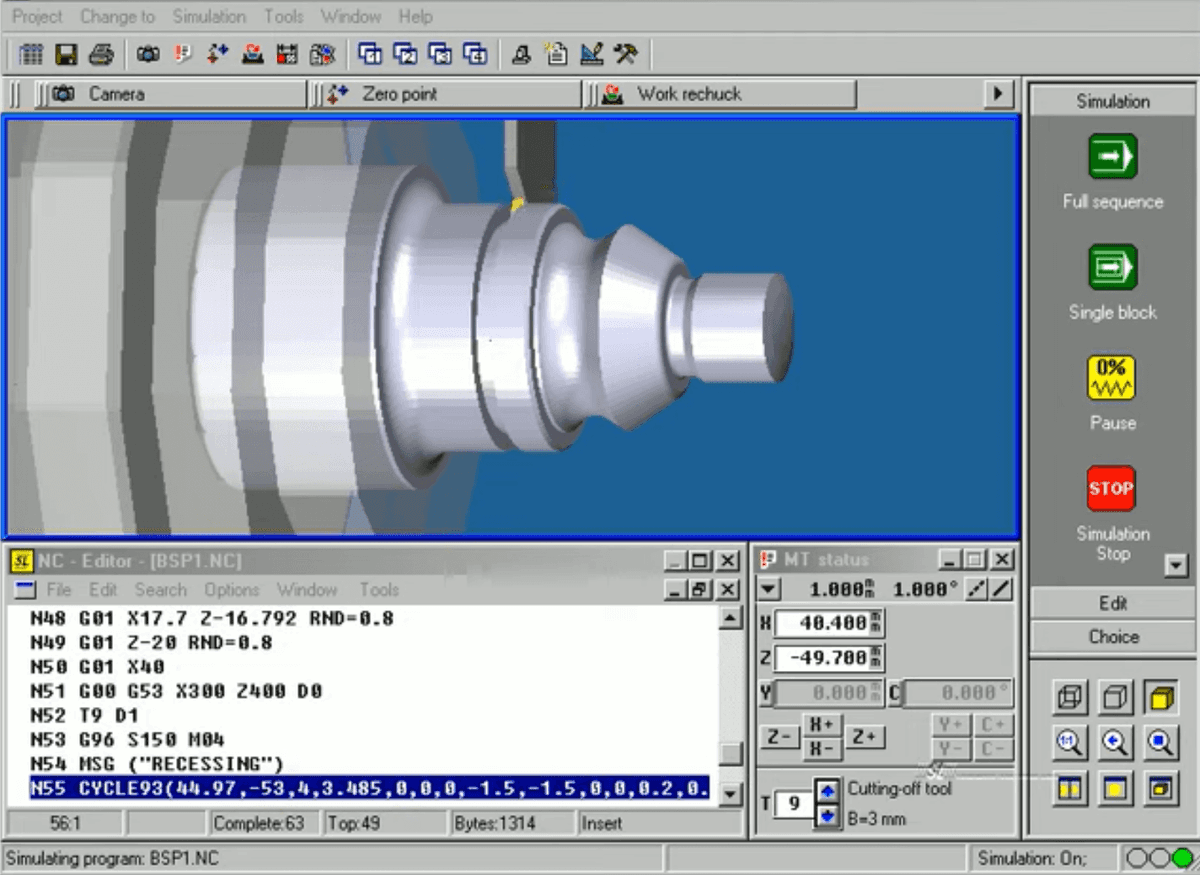
Example of CNC language: CNC machine reads the G-code and its format is very easy to understand.
Here, G01 is the linear move using X1 and Y1 coordinates, F10 is the feed rate, T01 is the Tool used, and S200 is the spindle speed.
| Check out CATIA Interview Questions for Beginners |
CAE (Computer-Aided Engineering)
Computer-Aided Engineering (CAE) is an emerging field that takes CAD to the next level. CAD software helps to create 2D and 3D models, whereas CAE software enables a deep engineering analysis of models.
It finds applications in engineering areas such as finite element analysis, stress analysis, kinematics, fluid dynamics, etc.
CAE uses mainly CAD software, and sometimes it is termed as CAE tools. These tools are used to analyze the robustness and performance of components and assemblies.
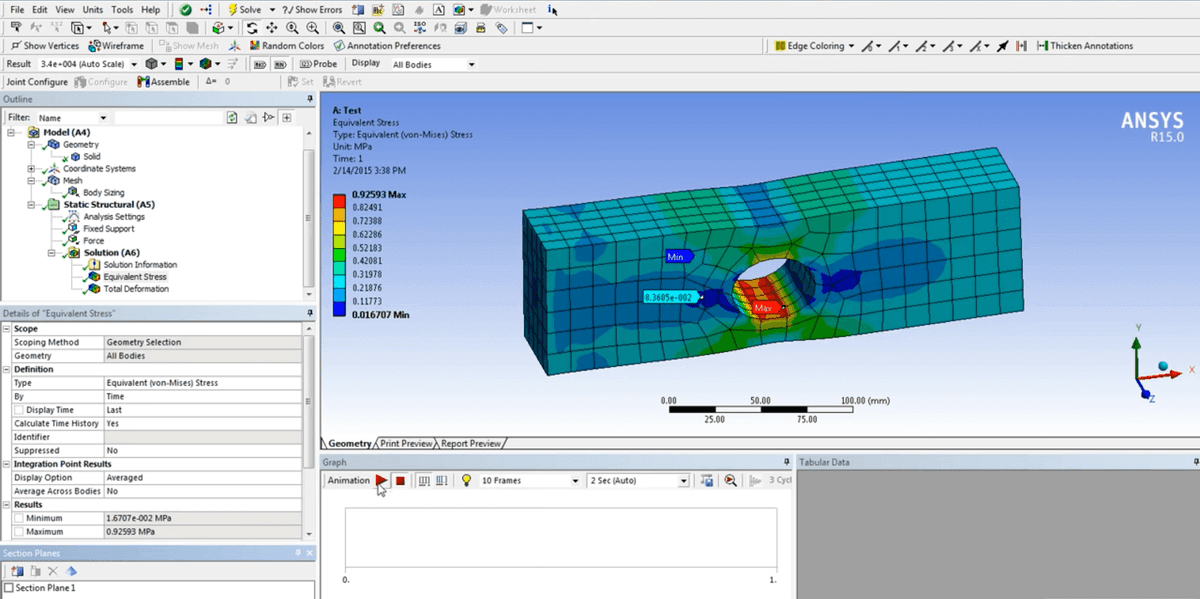
What is CATIA?
CATIA (the full form of CATIA is Computer-Aided Three-Dimensional Interactive Application) is the most widely used Design tool from Dassault Systems. It is a complete suite that incorporates CAD, CAM, and CAE.
CATIA delivers 3D design, CAE, CAM, and Product Lifecycle Management (PLM) solutions. The software is commonly used in manufacturing industries and Original Equipment Manufacturers (OEMs) to increase the process of designing, analyzing, and management of new products.
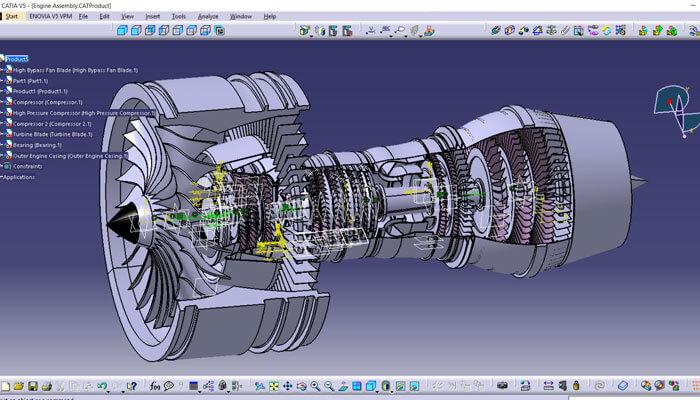
CATIA is a solid model tool that combines 3D parametric features with 2D tools and even addresses every design-to-manufacturing process.
It also provides generating section, auxiliary, isometric, detailed 2D drawing, or orthographic. Thus, this software serves the best for creative designers, mechanical engineers, system architects, and manufacturing industries.
What is CATIA 3D Experience?
CATIA 3D Experience incorporates the Product Data Management (PDM) and Product Lifecycle Management (PLM) with ENOVIA through the integration of Dassault systems and other brands like DELMIA, SIMULIA, etc.
The use of 3D Experience is to connect with other areas of the organization. It provides an intuitive environment for all the design and engineering activities.
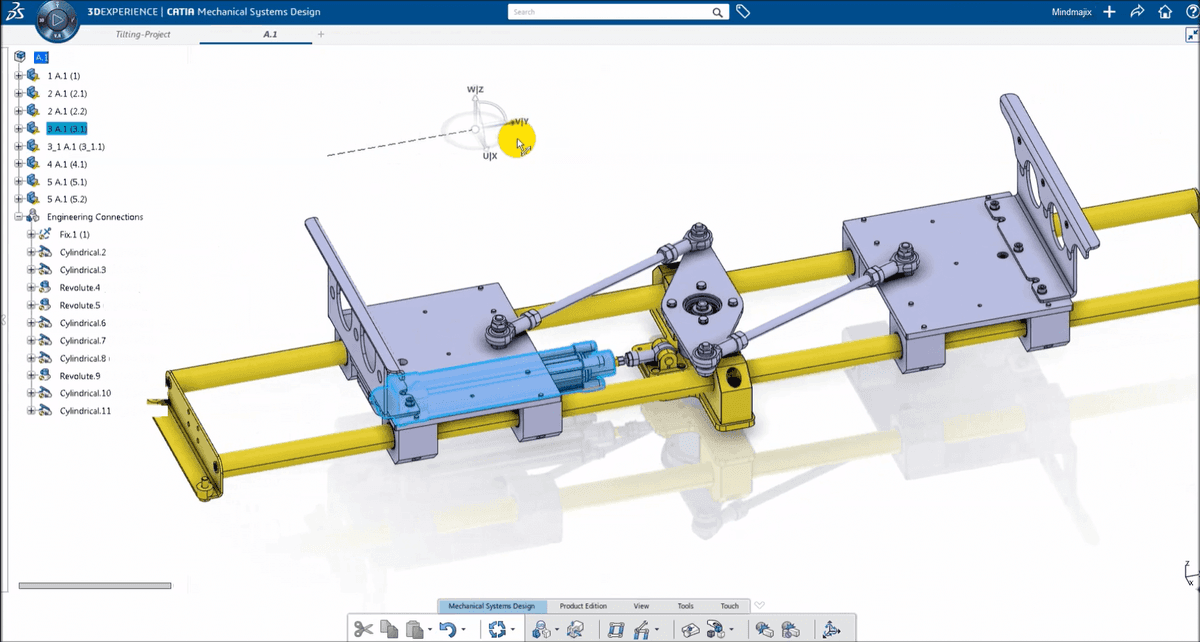
These activities are arranged in groups that can reflect real-life workflows, standardize icons, allow a rapid user learning curve, easy to find the right function, and productivity gains.
The 3D Experience CATIA portfolio includes around 50 roles that support user experiences in Design, Fluid, Electrical, and Mechanical Engineering, and also Systems Engineering.
Features of CATIA
CATIA offers a complete engineering toolkit in a single working environment. The products for Composites and Electrical design disciplines with traditional surfacing, drafting, and solids workbenches within a consistent User Interface.
The following are the best features of CATIA.
- CATIA provides the best solutions for the entire shape designing, styling, and surfacing workflows from industrial design to Class A.
- CATIA accelerates the process of engineering by 30-50%.
- It gives a complete definition of modeling, simulation, verification, and business process management.
- It allows for the simulation of objects using a 3D digital mock-up.
- CATIA has a new feature “design anytime and designs anywhere” that enables capturing and sending the design modifications offline to the team members.
- It offers a productive 3D design environment that enables designers and stakeholders to work together on product modeling and to share the designs.
Versions of CATIA
The development of Software depends on the requirement of the industries. No doubt, all developers of CAD software try to bring up something unique and better. Since 1980, CATIA has been constantly developing its versions to satisfy the need for design.
Today, CATIA is one of the world’s leading solutions for Product development and innovation in all industries branches. Let’s check out its versions in detail.
CATIA V3 and V4
In and around 1982, the first version was released. The Boeing Company chose the CATIA V3 as its main 3D CAD tool.
CATIA V3 is used to create 3D Designs. Later in 1988, CATIA V3 was ported from mainframe computers to UNIX.
In 1993, CATIA V4 was published and developed by Dassault Systems. V4 has supported the 3D digital mock-up and native formats such as IGES, STEP, STL, and DXF.
CATIA V4 file extensions are .model (Part, Assemble), .session (Assembly of various model files), .exp, .dlv3 and .dlv4. Dassault Systems made the feature to convert CATIA V4 files to CATIA V5 for easy access.
CATIA V5
CATIA V5, the most popular and the most used CATIA version. V5 is a CAD software used for parametric and non-parametric modeling. CATIA V4 essentially replaces it by including more functions such as additional platform support, ease of use, etc.
V5 is capable of performing basic FEA analysis and basic machining without adding the products of SIMULIA and DELMIA.
- CATIA V5 provides a scalable platform for collaborative product creation and product data management.
- It offers highly intuitive tools to create, modify, and validate any freeform and mechanical surfaces.
- Its architecture delivers advanced design control for Start of the art engineering.
- While defining a product, it allows the user to integrate and share electrical products, structural design information, and systems.
- With the help of Web-based Learning Solutions, it provides all the required information and training in one source.
CATIA V6
CATIA V6 is a 3D collaborative solution and referred to as CATIA 3D Experience. It enables users to model and compose complex products, defining, and executing the driving system to manage the complexity and deliver products on time.
It helps engineers with Digital Prototyping, including Analysis and Simulation for design and validation of function quality and performance at all stages of design.
CATIA V6 integrates complex product behavior into the product definition, enabling a real-time experience that predicts real-world performance.
It combines the Shape, Architecture, Functional, and Engineering characteristics of the product definition to integrate the digital product experience.
CATIA Composer
CATIA Composer enables both technical and non-technical users to create high-quality 2D and 3D product deliverables, including technical documentation, interactive 3D experiences, technical illustrations, etc. with CAD data formats.
It doesn’t require any programming skills or other specialized capabilities to produce any of its output deliverables.
The various CATIA applications from the core of Dassault Systems solutions meet the requirements of industries.
These versions revolutionize the way companies design, develop, and bring new products to the real world.
What does CATIA do?
CATIA offers a way to visualize designs in 3D. It is mostly used for its disciplined system, rendering technology, and sketching, multi-platform development, active collaboration, market compliance, and engineering insights.
CATIA is most widely used in many industries such as automotive, defense, aerospace, and industrial equipment.
CATIA has integrated a Multi-disciplinary approach and a Cross-discipline development platform. It is based on Advance Surface Modelling and has an Unbreakable Relational Design. With an amazing 3D user experience, workflows, and Social Design Environment. It even helps in the designing of electrical, electronic, and distributed systems.
Moreover, the graphical user interface is user-friendly in comparison to other 3D programs. Each tool and command in the workspace is easy to use.
Functions of CATIA Workbench
CATIA offers various workbenches that can be termed modules. Some of the most used and important workbenches and their functions are described below.
Generative Shape Design
Part Design is the essential workbench required for solid modeling. This workbench allows users to design 3D mechanical parts with an intuitive and flexible user interface from sketching to detailed iterative design.
Let’s check out a few commands used in the Part Design workbench.
-
Pad: Pad is the command used to convert a sketch into a 3D design. In CAD software, Pad is termed as Extrude.
-
Face: Face command is used to change the angle of selected faces to get the required shape of that particular face.
-
Fillet: Fillet command is used to make a smooth edge at required dimensions.
-
Pocket: The pocket command is used to create a hole in the Pad design at a required distance. In CAD, we used to develop Extrude without material.
Likewise, we see the part designing commands in this workbench.
Assembly Design
Assembly design workbench helps to assemble the parts of a component to get a basic structure, satisfying the constraints, and moving assemblies.
It is used to connect all the parts to create a complete component or a machine. In this section, we can even assemble the components to get an entire machine or a structure.
Generative Shape Design
Generative Shape Design workbench allows users to create wireframe elements and develop an existing mechanical part design with wireframe and surface features.
It provides a large set of tools used to create and edit shape designs. This makes it easy for both simple and complex shapes using surface and wireframe features.
Generative Structural Analysis
The Generative Structural Analysis allows users to analyze the first-order mechanical analysis for 3D systems. It includes:
- ELFINI Structural Analysis is used for mechanical analysis developments.
- Generative Part Structural Analysis is used for obtaining mechanical behavior information.
- Generative Dynamic Analysis is used for working in a dynamic response context.
- Generative Assembly Structural Analysis is used to analyze the mechanical behavior of the entire component.
Generative Sheetmetal Design
Sheet Metal design allows users to perform feature-based modeling.
It helps to create, develop, and analyze the sheet metal parts in concurrent engineering between the unfolded or folded parts.
Kinematic Simulation
Kinematics enables users to connect a series of joints that involves an assembly of parts, referred to as a mechanism. These joints define how the assembly can perform its motion.
This workbench explains how a component or a structure will move in the real world and helps to analyze the structure concerning its motion.
Real-time Rendering
The Real-time Rendering workbench allows users to define material specifications that can be shared over the entire product development access, while mapping materials to parts and products to produce realistic rendering.
Drafting Workbench
The Generative Drafting workbench allows users to generate drawings of 3D parts and assemble products.
Advantages of using CATIA
The following are the advantages of using CATIA.
Engineering insights
CATIA helps engineers to empower the insights of factors influencing the quality and overall performance of products and their 3D modeling tools.
It allows users to perform analysis and generate mechanical products in the operating environment through prototyping, comprehensive analysis, and simulation.
Multi-Platform Development
CATIA’s multi-platform development provides developers, engineers, and architects, a combination of business processing, multi-discipline modeling, and verification.
It offers flexibility to integrate 3D processes and embedded systems to improve the simulation of complicated systems and products.
Sketching and rendering methods
With CATIA’s revolutionary 3D sketching functions, the user can allow 2D sketches and can generate new designs.
It enables users to create quality renderings through global illuminations, perfect shadows, and reflections.
Active Collaborations
CATIA’s collaborative 3D environment enables users and stakeholders to participate in the design process actively. It can be accessed through 3D dashboards.
Disciplined system
The multi-discipline approach of CATIA is used when the product design and development are slowed down.
It looks for certain requirements from different disciplines to help companies to develop and review a new product.
Market compliance
CATIA ensures engineers will remain compliant with the market regulations and requirements to reduce the costs in both product and system development.
Drawbacks of using CATIA
The disadvantages of using CATIA are as follows:
-
The software is pretty heavy; even the computer that is designed for heavy-duty loads has to wait long to load files and make changes, thus reduces productivity.
-
CATIA software is more expensive to afford the license for personal use.
Differences between CATIA and AutoCAD
CATIA and AutoCAD are the most popular choices in the market. Let’s check out some of the major differences between them.
| CATIA | AutoCAD |
| CATIA offers a white user interface. | AutoCAD offers a Black user interface. |
| Drawing in CATIA is a bit difficult as it is an advanced design software with engineering capabilities. | Drawing in AutoCAD is robust and easy to create. |
| It is the best tool for 3D modeling and surfacing. | It is best suited for 2D modeling and drafting. |
| It can be able to design mechanical components with higher accuracy. | It is not possible to design mechanical parts with higher accuracy |
| It includes features such as Sheet metal design and Assembly. | It does not have these features. |
| The latest versions of CATIA can be customized with the help of C++, CAA, and VB. | AutoCAD can be customized using VB, DotNet, C++, VisualLISP, and AutoLISP. |
| CATIA is used in the Aerospace, Automotive, Aviation industries. | AutoCAD is used in civil and electrical fields. |
| It is more expensive than AutoCAD. | It is cheaper than CATIA. |
| CATIA is developed by Dassault Systems. | AutoCAD is developed by Autodesk. |
Conclusion
CATIA is a robust application that incorporates several approaches in the design and development of products that enable users to make use of advanced tools.
It offers advanced but still simple commands and tools that can be easily understood by engineers, designers, and architects. CATIA is a robust modeling tool that is best suited for designing complex structures and models.
CATIA as a skill helps to boost your career and future prospectus and also adds value to your design career. If you are interested to learn about CATIA, please go through our CATIA Training programs.
 On-Job Support Service
On-Job Support Service
Online Work Support for your on-job roles.

Our work-support plans provide precise options as per your project tasks. Whether you are a newbie or an experienced professional seeking assistance in completing project tasks, we are here with the following plans to meet your custom needs:
- Pay Per Hour
- Pay Per Week
- Monthly
| Name | Dates | |
|---|---|---|
| CATIA Training | Jan 13 to Jan 28 | View Details |
| CATIA Training | Jan 17 to Feb 01 | View Details |
| CATIA Training | Jan 20 to Feb 04 | View Details |
| CATIA Training | Jan 24 to Feb 08 | View Details |

Keerthana Jonnalagadda working as a Content Writer at Mindmajix Technologies Inc. She writes on emerging IT technology-related topics and likes to share good quality content through her writings. You can reach her through LinkedIn.





